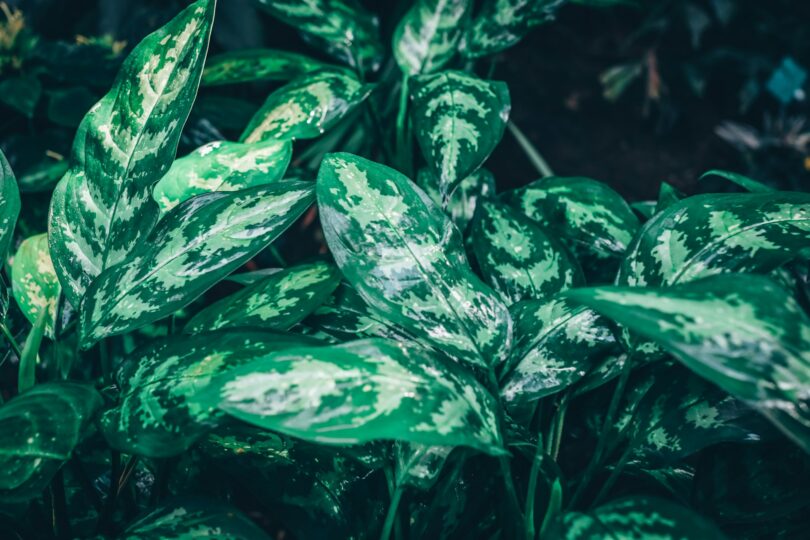Plants That Eat Meat: The Carnivores of the Flora Kingdom
When we think of carnivores, Plants That Eat Meat images of lions stalking prey or sharks patrolling ocean waters might come to mind. But in the hidden corners of wetlands, jungles, and nutrient-poor soils, a quieter, stranger form of predation unfolds. Welcome to the fascinating world of carnivorous plants—green lifeforms that have evolved to trap, digest, and absorb the nutrients of unsuspecting animals, primarily insects. These “meat-eating” plants break all conventional expectations of what flora should be, challenging our perceptions of the plant kingdom.
Understanding Carnivorous Plants
What Makes a Plant Carnivorous?
A plant is considered carnivorous if it satisfies three criteria:
-
It attracts prey.
-
It traps or kills the prey.
-
It digests the prey and absorbs nutrients.
This carnivory is not for sustenance alone—photosynthesis still plays a vital role in their survival. Instead, carnivorous plants use meat-eating as a supplement in environments where the soil lacks essential nutrients, especially nitrogen and phosphorus.
Evolutionary Adaptation
Carnivory in plants has evolved at least 10 separate times in history across multiple families. This convergence suggests it was a valuable survival tactic, especially in acidic or nutrient-deficient soils such as bogs and swamps. Their mechanisms for trapping prey range from sticky surfaces to complex snap-traps and even bladder-like vacuums.
The Most Famous Carnivorous Plants
1. Venus Flytrap (Dionaea muscipula)
Mechanism of Action
The Venus flytrap is perhaps the poster child of carnivorous plants. Native to the subtropical wetlands of the Carolinas in the United States, it captures prey using a rapid “snap trap” mechanism. The trap consists of two lobes with hair-like sensors. When a bug touches these hairs twice within 20 seconds, the lobes shut in less than a second.
Digestive Process
Once the prey is caught, the plant secretes enzymes to break down the soft tissues of its victim. The process takes about 5 to 12 days, after which the trap reopens to discard the indigestible remains.
2. Pitcher Plants (Families: Nepenthaceae, Sarraceniaceae, Cephalotaceae)
Structure and Function
Pitcher plants lure prey into their deep cavity or “pitcher,” which is often filled with digestive fluid. The inner walls are slippery and lined with downward-facing hairs or waxy coatings, making escape nearly impossible.
Global Diversity
-
Nepenthes (Old World pitcher plants) are mainly found in Southeast Asia.
-
Sarracenia (North American pitcher plants) dominate the bogs of the eastern U.S.
-
Cephalotus follicularis (the Albany pitcher plant) is native to southwestern Australia.
Each variety has adapted to local environments, with pitchers that differ in size, color, and even smell—some mimic flowers, while others emit a faint scent of decay.
3. Sundews (Drosera spp.)
Glistening Death
Sundews are coated in glandular hairs that exude a sticky, dew-like substance. When an insect lands on the leaf, it becomes ensnared by this glue. The plant then slowly curls its leaf around the trapped prey, beginning digestion.
A Wide Range
There are over 200 species of sundews, found on every continent except Antarctica. Some are small and delicate, while others, like Drosera regia, grow large and can consume bigger prey like beetles and moths.
4. Bladderworts (Utricularia spp.)
Underwater Predators
Bladderworts are aquatic carnivorous plants with small bladder-like traps. These bladders create a vacuum seal. When tiny aquatic organisms touch trigger hairs on the bladder’s entrance, the trapdoor opens inward, sucking in the prey in less than a millisecond.
Microscopic Efficiency
Though invisible to the naked eye, the speed and mechanics of bladderwort traps are among the fastest movements in the plant kingdom.
5. Butterworts (Pinguicula spp.)
Sticky but Subtle
Butterworts use a passive trapping mechanism with their greasy, adhesive leaves. Insects are attracted to the glistening surface, become stuck, and are then digested by enzymes.
A Dual Role
Interestingly, many butterworts switch strategies during their growing season. They are carnivorous during active growth and revert to photosynthetic strategies during dormancy.
Lesser-Known Carnivorous Plants
1. Cobra Lily (Darlingtonia californica)
Named for its resemblance to a striking cobra, this plant uses translucent “false exits” to confuse prey. Native to Northern California and Oregon, the Cobra Lily is a marvel of evolutionary trickery.
2. Roridula
Found in South Africa, Roridula plants have sticky hairs like sundews but do not produce digestive enzymes. Instead, they rely on a mutualistic relationship with assassin bugs, which digest the trapped insects. The plant then absorbs nutrients from the bugs’ feces—an indirect but effective strategy.
Read More: The Cursed Objects Museum: Truth Behind the Legends
The Science Behind Their Diet
Enzyme Activity
Carnivorous plants secrete digestive enzymes such as proteases and phosphatases that break down prey into absorbable nutrients. In some species, bacteria within the traps also aid in decomposition.
Absorption and Growth
The nutrients gained from carnivory allow these plants to grow in habitats that are inhospitable to most others. This includes acidic bogs, sandy swamps, and rocky outcrops.
Habitats and Distribution
Carnivorous plants are generally found in areas with:
-
Poor, acidic, or sandy soils
-
High sunlight exposure
-
High humidity or water availability
This includes:
-
Bogs and marshlands
-
Tropical rainforests
-
Mountainous plateaus
-
Freshwater aquatic environments
Many species have highly restricted ranges, making them vulnerable to habitat destruction.
Conservation Concerns
Threats
-
Habitat Loss: Urbanization, agriculture, and climate change threaten their unique ecosystems.
-
Overcollection: Some species, like the Venus flytrap, are endangered due to illegal poaching for the horticultural trade.
-
Pollution: Acid rain and soil contamination degrade their habitats further.
Conservation Efforts
-
Establishing protected reserves
-
Seed banking and cultivation in botanical gardens
-
Laws prohibiting wild collection (e.g., Venus flytrap poaching laws in North Carolina)
Carnivorous Plants in Popular Culture
From the musical Little Shop of Horrors to episodes of The X-Files, carnivorous plants have captivated imaginations for decades. Often depicted as monstrous or alien, their real-life behaviors, though less dramatic, are no less fascinating. They inspire scientists, artists, and even engineers interested in bio-inspired technology.
Growing Carnivorous Plants at Home
Popular Species for Cultivation
-
Venus flytrap
-
Cape sundew (Drosera capensis)
-
Sarracenia hybrids
-
Nepenthes hybrids
Care Tips
-
Use distilled water or rainwater (tap water contains minerals that can harm them).
-
Grow in nutrient-poor, acidic soil (like peat moss and sand).
-
Provide full sun or grow lights.
-
Avoid fertilizing—let them catch their own food.
What Carnivorous Plants Teach Us
Adaptation and Survival
These plants are a testament to nature’s adaptability. By turning the predator-prey relationship on its head, carnivorous plants show how life can find a way, even in the most hostile conditions.
Complex Plant Behavior
Far from passive organisms, carnivorous plants exhibit fast movements, chemical signaling, and even rudimentary “memory” (e.g., the Venus flytrap only closes when two hairs are touched in quick succession).
The Future of Carnivorous Plant Research
Ongoing research into these plants could offer insights into:
-
Evolutionary biology and genetics
-
Enzyme engineering and biotechnology
-
Sustainable agriculture and pest control
-
Bioinspired robotics and materials science
Genetic sequencing of species like Drosera and Utricularia is revealing how these adaptations emerged and how they might be applied in other scientific fields.
Conclusion:
Plants That Eat Meat are an astonishing example of evolution’s creativity. With their strange beauty, bizarre methods, and undeniable charisma, they occupy a special niche in both nature and human fascination. Whether in the swamps of the Carolinas, the highlands of Borneo, or a sunny windowsill, these meat-eating marvels remind us that nature is full of surprises—and sometimes, even the quietest living things can be deadly.



